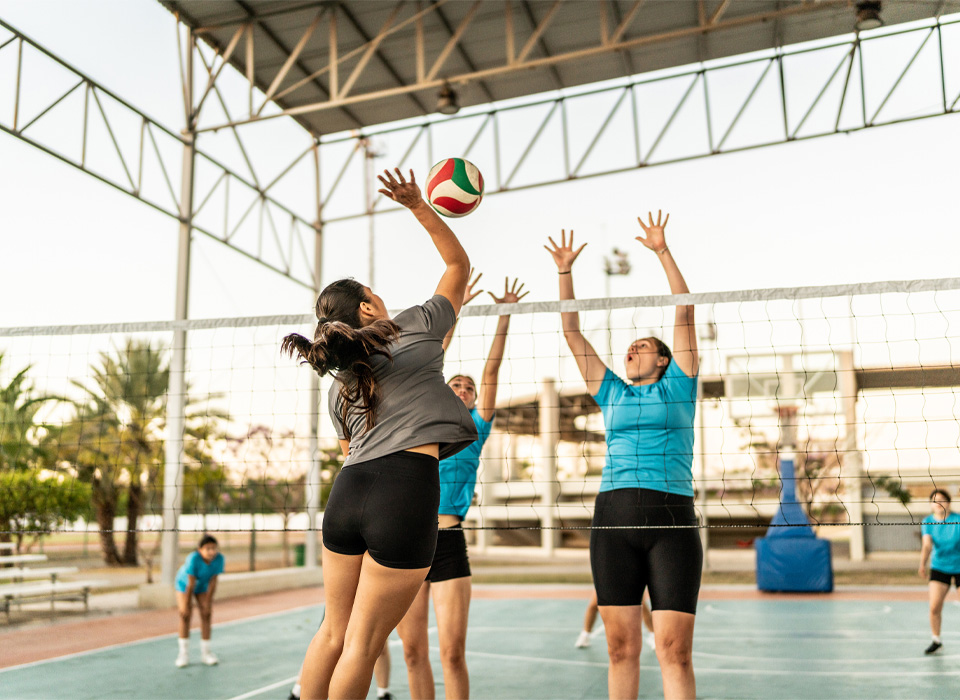At all levels, coaches and parents are consistently looking for ways to keep their athletes healthier in sport. Recognizing that an athlete is more than just a player in a game is step one. Athletes, particularly young ones (boys under 17, girls under 13) need to be consistently active, but not consistently playing the same game. Movement specificity at any age is necessary to become proficient at sport but it is also the primary culprit for injury. To help minimize injury, coaches and trainers should spend time teaching their athletes the following abilities.
How to decelerate
Jumping high and running fast are great, but they are secondary until an athlete knows how to land and stop. Teaching good landing and breaking mechanics are essential to help athletes minimize injuries associated with jumping, cutting, and planting.
Exercises
- Drops
- 1 leg drops
- Ice skaters
- Backpedal
- Backward skipping
- Mini-band movements
- Jump rope *
Pro tip: Jumping rope is a fabulous exercise when athletes are already fatigued. Jumping rope requires foot strength, reactivity and initiates natural neural-feedback mechanisms necessary for balance and stability. Ask your athletes to jump rope 50 times (single hop) at the end of practice or games to get started – slowly adding repetitions each week until all athletes can single hop rope for 5 minutes or more. For added benefit, ask them to look at their feet as they jump.
How to accept/reduce impact
Clinically, we often distinguish between “impact” and “non-impact” injury by defining impact as a collision with another player. In truth, almost all injuries are the result of impact – whether that be with another player, the ground, piece of equipment, etc. – and there are ways to teach athletes to minimize this impact. Teaching great athletic form for hitting, kicking, tackling, jumping, running etc. is a great start but we can also help athletes accept impact in less sport specific situations, making these tendencies more innate.
Exercises
- Dead bugs
- Supermans
- Body weight plyometrics (reducing effort to 80% or less 1RM)
- Multi-directional skips
- Warding drills
- Long toss
Pro tip: The point of impact in most sport should be one of relaxation unless the goal of impact is to tackle or block an opponent. Athletes who tighten up at impact (whether a collision with another player, the ground, or piece of equipment) are much more likely to get injured than one who relaxes and absorbs the impact. Coaches can play games and run drills that encourage safe impact. A few bumps and bruises may ensue, but in a well controlled environment, athletes will learn the severity of impact and likely outcomes rather than fear greater physical harm.
How to breathe
Breathing is a recognizable indication of internal nervous stimulation. An athlete who frequently holds their breath or gasps when straining intensifies the sympathetic nervous response which tightens connective tissues for a “fight or flight” response. Doing this repeatedly in a game/match will put greater wear on the athletes fascial system and keep them at a higher state of tension which will increase the damage of impact (see #2).
Pro tip: Although there are special exercises to teach breathing techniques they are frequently time intensive and not effective in many athletic environments. Instead of performing breathing exercises, coaches and trainers should simply remind their athletes to inhale and exhale (primarily the latter). Encourage proper breathing by instructing audible exhalation at impact (think of boxers throwing punches) and ask your athletes to count out loud when performing exercise repetitions. If they are audible, they are breathing.
